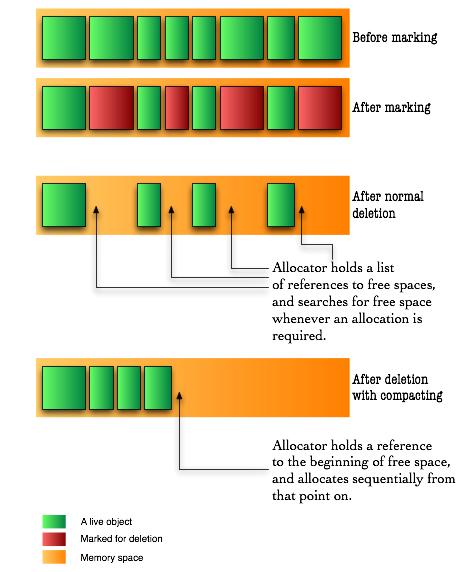The garbage collector first performs a task called marking. The garbage collector traverses the application graph, starting with the root objects; those are objects that are represented by all active stack frames and all the static variables loaded into the system. Each object the garbage collector meets is marked as being used, and will not be deleted in the sweeping stage.
The sweeping stage is where the deletion of objects take place. There are many ways to delete an object: The traditional C way was to mark the space as free, and let the allocator methods use complex data structures to search the memory for the required free space. This was later improved by providing a defragmenting system which compacted memory by moving objects closer to each other, removing any fragments of free space and therefore allowing allocation to be much faster:

For the last trick to be possible a new idea was introduced in garbage collected languages: even though objects are represented by references, much like in C, they don’t really reference their real memory location. Instead, they refer to a location in a dictionary which keeps track of where the object is at any moment.
Fortunately for us - but unfortunately for these garbage collection algorithms - our servers and personal computers got faster (and multiple) processors and bigger memory capacities. Compacting memory areas this large often was very taxing on the application, especially considering that when doing that, the whole application had to freeze due to the changes in the virtual memory map. Fortunately for us though, some smart people improved those algorithms in three ways: concurrency, parallelization and generational collection.

0 comments:
Post a Comment